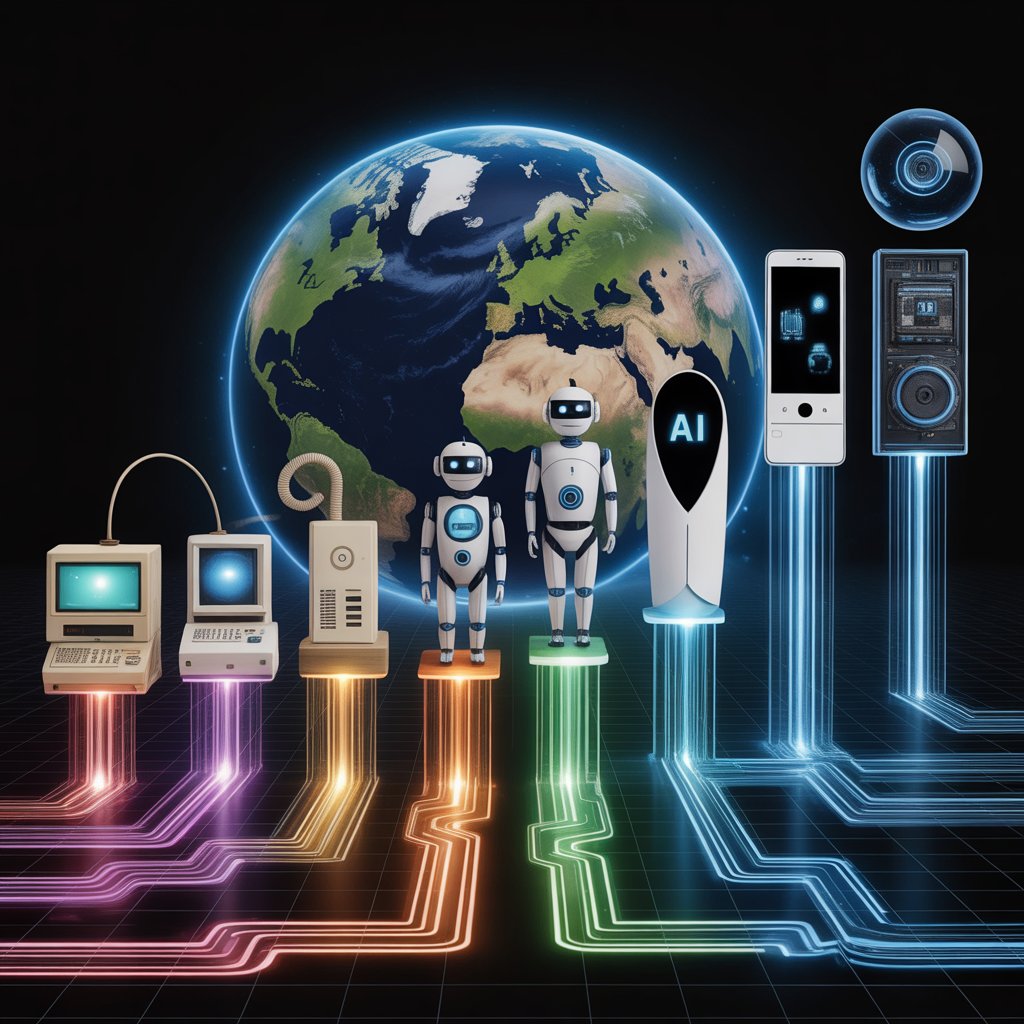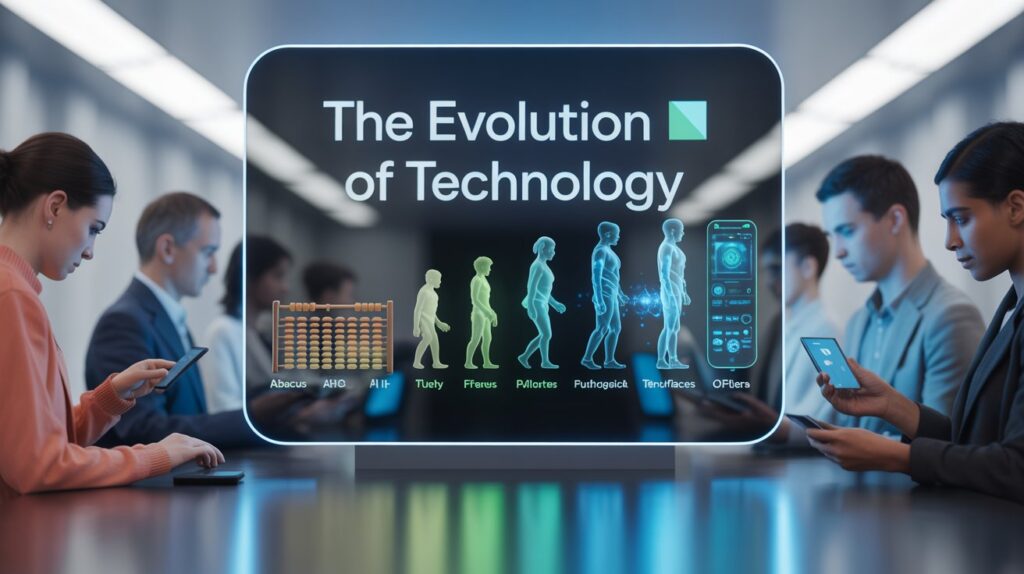
The Evolution of Technology: Shaping the Future We Live In

Over the past few decades, technology has advanced at an extraordinary rate, transforming industries, societies, and our daily lives. From the introduction of personal computers to the emergence of artificial intelligence (AI) and the surge of the Internet of Things (IoT), we have experienced a remarkable shift in how we connect, work, and live. As we look ahead, we must consider: What lies ahead for technology, and how will it keep influencing our world?
The Digital Revolution: From Computers to Smart Devices
It began in the mid-20th century when computers were enormous machines, accessible only to governments, universities, and major corporations. Now, in the 21st century, personal computers are ubiquitous in both homes and offices. The internet revolutionized global connectivity, and smartphones—once a luxury—have become vital tools for communication, entertainment, and productivity.
The widespread use of mobile technology fueled the growth of the app economy. With platforms like Apple’s App Store and Google Play, developers have the means to create innovative applications for nearly every aspect of life. Today, there’s an app for almost anything—be it health tracking, shopping, financial management, or fostering creativity.
AI and Machine Learning: The Future of Automation
Among the most notable technological developments today is artificial intelligence (AI) and machine learning. These innovations enable machines to replicate human-like thought processes and perform tasks traditionally requiring human intellect. From self-driving vehicles to virtual assistants like Siri and Alexa, or recommendation algorithms on streaming services, AI is becoming an essential part of our daily reality.
The emergence of AI-driven automation is transforming sectors such as healthcare, finance, and manufacturing. In the medical field, AI assists in diagnosing illnesses, analyzing medical images, and predicting patient outcomes with remarkable accuracy. In finance, algorithms streamline processes ranging from credit assessments to fraud detection, significantly reducing human error.
As AI continues to progress, ethical and privacy considerations are coming to the forefront. How can we ensure the responsible use of these technologies? Will automation lead to job losses, or can it generate new opportunities? These are critical questions society must confront as we advance toward a more automated future.
The Internet of Things (IoT): Connecting Everything
The Internet of Things (IoT) encompasses the expanding network of everyday items linked to the internet. This ranges from smart thermostats and refrigerators to wearables and security cameras. The potential of IoT lies in creating smarter homes, cities, and industries through device communication and independent operation.
For example, smart homes utilize IoT devices to control heating, lighting, and security while enabling remote operation through apps. In urban environments, IoT sensors improve traffic flow, air quality monitoring, and waste management. In agriculture, connected sensors track soil moisture and crop health, helping farmers maximize their yields.
However, as IoT expands, it raises concerns about data security and privacy. Each connected device can serve as a potential gateway for cyberattacks, and the amount of personal information these devices gather makes robust protection crucial.
Quantum Computing: A Leap Into the Unknown
Looking further into the future, quantum computing is set to completely alter the technological landscape. Unlike conventional computers that process data in bits (0s and 1s), quantum computers utilize qubits, which can represent and store information in multiple states simultaneously. This capability has the potential to significantly enhance computing power and tackle problems currently beyond classical computers.
Quantum computing could revolutionize areas like cryptography, materials science, and drug discovery. It might dismantle existing encryption methods that secure digital transactions but also enable the development of more secure encryption techniques. The possibilities are vast, yet we are only beginning to understand how to leverage quantum computing effectively.

Tech’s Impact on Society: A Double-Edged Sword
While technology has ushered in remarkable advancements, it also presents challenges. The rapid speed of innovation has brought forth issues related to privacy, security, and disparity. Social media platforms, for example, have changed our communication styles but have faced criticism for spreading misinformation, exacerbating mental health problems, and fueling political divisions.
Moreover, the digital divide remains a pressing issue. As technology progresses, not everyone can access it equally. In many developing nations, inadequate infrastructure and affordability issues prevent people from reaping the benefits of the latest technological advancements. Bridging this gap is essential to ensure that technology is inclusive and benefits everyone, regardless of social or economic background.

Looking Ahead: The Promise of Technology
The future of technology is both thrilling and uncertain. From AI and robotics to quantum computing and beyond, the potential is immense, yet so are the hurdles. As innovation continues, it’s vital to prioritize the human element—ensuring that technology is applied ethically, responsibly, and in ways that enhance the quality of life for individuals around the globe.
Tech Talk: Navigating the Digital Transformation Era
Bridging this gap is essential to ensure that technology is inclusive and benefits everyone, regardless of social or economic background. Looking Ahead: The Promise of Technology The future of technology is both thrilling and uncertain. From AI and robotics to quantum computing and beyond, the potential is immense, yet so are the hurdles. As innovation continues, it’s vital to prioritize the human element—ensuring that technology is applied ethically, responsibly, and in ways that enhance the quality of life for individuals around the globe.
